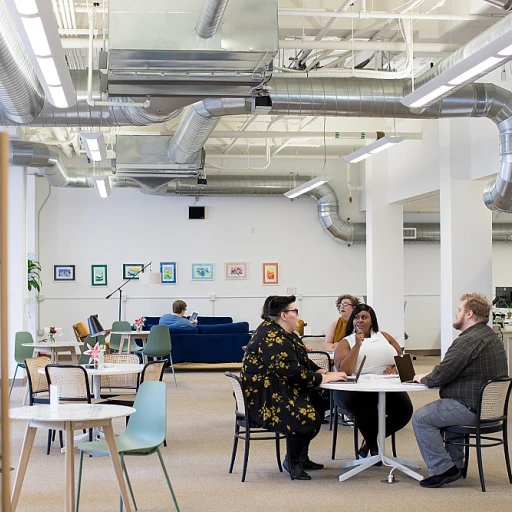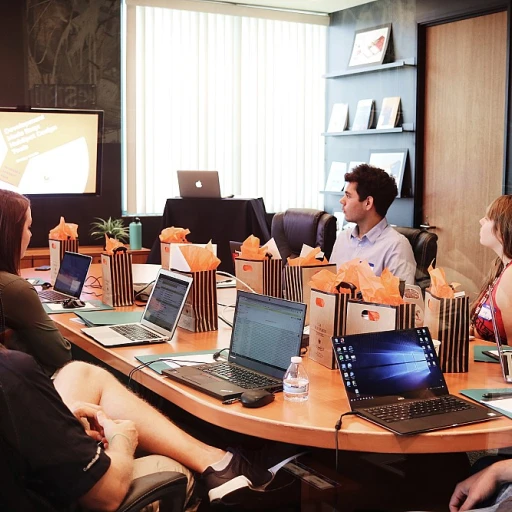Understanding Strategic Vision
Crafting the Right Questions for Strategic Insight
Engaging in conversations with senior leaders requires a keen understanding of the strategic vision of your company. By asking insightful questions, you align yourself as a proactive team member contributing to the organization's success. Leaders appreciate when you demonstrate a grasp of long-term goals and the challenges they face in achieving them. Initiate dialogues around the company's direction by leveraging strategic questions. For instance, inquire about the key objectives that senior leadership prioritizes and how these align with the overarching strategy. Ask about the hurdles they anticipate in the near and distant future. This demonstrates your understanding of their leadership style and the environment they operate in. To further solidify your professional standing, clarity on decision-making processes within the organizational culture is essential. Understand the dynamics at play in meeting company success while aligning your contributions to these frameworks. Remember, each interaction offers growth opportunities not only for your career but also for the team culture. By asking good questions that delve into organizational nuances, you not only learn but also share valuable insights that can drive professional development. As you seek knowledge from senior leaders, be prepared for discussions that will enhance your ability to contribute to both immediate and long-term company objectives.Navigating Cultural Nuances
Understanding and Embracing Cultural Dynamics
Engaging senior executives involves appreciating the array of cultural nuances within the organization. Differences in leadership styles and communication preferences are often influenced by cultural backgrounds. Successful leaders focus on how these elements interface with the company’s goals and strategic initiatives.
Senior leaders should ask questions that prompt a deeper understanding of how cultural diversity can propel career growth and organizational success. These strategic questions can offer insights into the unique challenges and opportunities that arise from the team culture. Acknowledging diverse perspectives enriches decision making, leading to robust solutions and organizational growth.
While leadership styles may vary across cultures, the ultimate goal remains the same: fostering a productive and harmonious workplace. Incorporating cultural sensitivities into leadership strategies can enhance both individual and team dynamics. Exploring humor in the context of office supplies demonstrates how cultural nuances can even influence lighter aspects of office life, bridging gaps at the workplace.
Additionally, cultural awareness aids in driving employee engagement by cultivating an inclusive environment where team members feel valued and understood. This environment not only supports professional development but also aligns with the company’s long-term objectives, aiding in sustainable success.
By recognizing and respecting cultural nuances, organizations can pave the way for successful collaboration and innovation, creating a dynamic work life that fuels both personal and company success.
Driving Innovation and Growth
Promoting a Culture of Innovation and Progress
The landscape of leadership is perpetually evolving, and today’s senior leaders are tasked with the challenge of fostering an environment ripe for innovation and growth. In aligning with strategic objectives, it's crucial to encourage leaders within the organization to stimulate creativity and embrace fresh ideas. To effectively drive innovation, certain questions should be posed during insightful conversations with senior leaders. How can we cultivate a leadership style that encourages risk-taking while maintaining organizational stability? What are the strategic levers that will help the team navigate the dichotomy between persistent growth and sustainability? Synergy between teams and open channels of communication are vital for the germination of ingenious ideas. Encouraging team members to share their career aspirations and professional goals can spur innovative thinking, contributing to long-term company success. These efforts can also enhance employee engagement across the organizational hierarchy. Integrating these strategic questions into routine leadership discussions promotes a culture where team culture thrives on creativity and collaboration. Leaders who adopt this approach are likely to experience positive shifts in organizational culture, fostering company success that extends beyond immediate achievements. Incorporating perspectives that reflect diverse experiences can lead to breakthroughs in problem-solving and decision-making. Facilitating these conversations could revolve around asking good questions on how leadership can adapt to emerging trends and challenges. For more insight into the leadership dynamics and strategic questioning that underpins this approach, you might explore the unique dynamics of office superlatives in an Arabian Emirate company.Managing Risk and Compliance
Balancing Risk Management with Organizational Growth
In a landscape where work life is characterized by rapid changes and uncertainties, senior leaders must pay close attention to how they manage risk while fostering the company's growth. It is crucial for leadership to not only remain vigilant about potential threats but also to identify and leverage opportunities that align with the organizational culture and goals.
To effectively manage risks, senior leaders should ask good questions that evaluate both the present risk factors and future growth prospects. This includes looking into decision-making processes and learning how to balance caution with ambition. Asking strategic questions about current market trends and assessing economic indicators can reveal insights that help steer the organization toward long-term success.
Successful risk management requires a cohesive effort from both senior leadership and team members. It involves cultivating an environment where employees feel empowered to share their observations and feedback. This open channel of communication can enhance professional development, ensuring that all voices within the organization are heard and that all risks are adequately covered.
By maintaining a strong commitment to risk management, leadership will not only safeguard the company's resources but also foster career growth and development among its employees. This commitment signals a dedication to the company's success and employee engagement, ultimately leading to a stronger and more resilient organization.
Enhancing Employee Engagement
Creating Meaningful Connections in the Workplace
Employee engagement is pivotal to the success and growth of any organization. When engaging with senior leaders or conducting an interview, asking strategic questions related to employee engagement can uncover strategies that promote a thriving organizational culture. Leaders play a crucial role, and understanding their approach can offer insights into boosting professional development and fostering team culture.
The commitment to work life balance is a substantial part of employee engagement. Senior leaders should be encouraged to share their favorite leadership style practices that enhance connection with team members. Asking questions about how they motivate their teams and ensure alignment with company goals can provide valuable perspectives on what drives motivation.
Here are examples of questions you might consider:
- How do you support career growth among your team members?
- What strategies do you employ to strengthen engagement within a professional setting?
- How does your leadership style help the organization tackle challenges related to employee engagement?
- Can you share instances where your approach directly contributed to company success?
By aligning questions with the broader themes of innovation, risk management, and sustainability covered in previous discussions, a senior leader can engage more effectively, fostering an environment where employees feel empowered to contribute to long-term organizational success.
Sustainability and Corporate Responsibility
Promoting a Culture of Responsibility and Sustainability
In today's corporate landscape, the role of senior leadership is increasingly intertwined with the principles of sustainability and corporate responsibility. Leaders in the organization need to develop a leadership style that not only drives success but also incorporates long-term sustainability goals into their strategic decision-making processes. This requires asking the right questions to ensure alignment with these objectives.
Senior leaders must pose insightful questions about how the organization can integrate sustainable practices into its core business processes. Encouraging team members to think about these issues will help create a workplace culture that prioritizes both environmental and social responsibility. Effective leadership involves frequently engaging with employees to understand their views on these topics and leveraging their insights to drive meaningful change within the company.
Additionally, fostering employee engagement around sustainability can enhance career growth and professional development opportunities. By involving team members in the conversation, leaders can not only improve organizational culture but also empower employees to contribute actively to the company's sustainable initiatives.
The challenges of balancing corporate responsibility while achieving organizational goals are real and multifaceted. Senior leadership must continuously adapt strategies and ask good questions in order to stay ahead in this evolving arena. It's vital to understand how sustainability can influence company success and reshape career trajectories within the organization.
Providing a platform for open communication and encouraging questions about sustainability initiatives can significantly bolster organizational development. In doing so, senior leadership will not only help address current challenges but also pave the way for a more resilient and responsible future.











